
How to reset a fatigued team and what could happen if you don’t
Are you working with a fatigued team?
Here’s what it might look like…
Communication is strained, people regularly show up to meetings late, deadlines get pushed, and no one wants to commit to decision-making.
If you’re struggling to create the conditions that help your team renew their sense of purpose, maintain high levels of energy and perform at their peak, then read on for some practical tips for a reset.

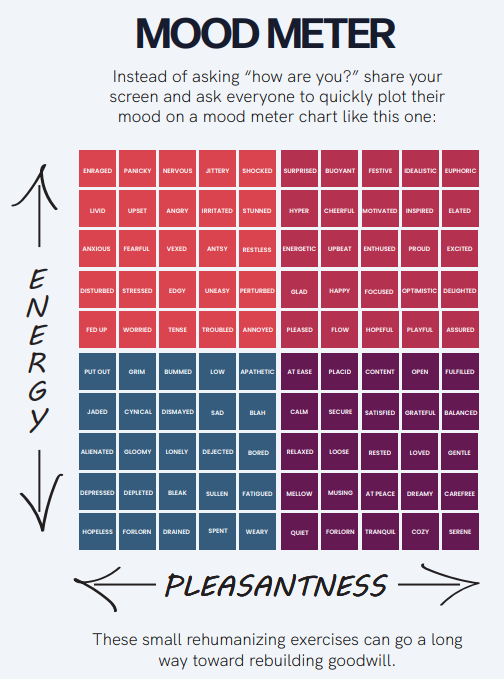
Don’t underestimate the power of the pandemic.
Are you struggling to find common ground with your team members?
If you’re coming up short on concrete explanations for a tense dynamic and lack of connection, consider the immense psychic toll COVID-19 has taken on you and everyone around you over the last 2 years.
One of the hardest things about this moment is that we are each experiencing a universal event in unique ways.
We can all agree that it has been an incredibly challenging adjustment…
But is it difficult in the same way for my teammates as it has been for me?
How have your interactions shifted with your colleagues?
With your partners, roommates, children, friends, or extended family?
How might your teammates be experiencing feelings of risk and loss?
Invisible symptoms of COVID-related anxiety may be surfacing in unpredictable or confusing ways.
And I’ll be honest…
There are only so many tactical ways to bridge the human connection gap we’re suffering from.
If you think your teammates are willing to open up, offer space for a more specific check-in at the top of your next meeting.
A team charter can help, but still relies on good hygiene.
I have great faith in the power of the team charter. An effective charter sets expectations about how you will work together, and should include the following:

Team Mission & Purpose

Shared Core Values

Roles And Responsibilities

Accountability Mechanism

Decision Making Methods

Metrics For Success

Communication And Behavioral Norms
That said, from personal experience we know that there are limits to the power of the charter.
Yes, a good charter can prevent the painful trial and error of mismatched expectations and haphazard coordination…
But ultimately it cannot solve for a team that is simply burnt out.
If you are on a team like this, WE SEE YOU!
Since that very first high school project, we’ve all been on teams that shaved years our of our lives. And?
It doesn’t mean you should skip the chartering process.
On the contrary, the charter is still a vitally important tool for team success
To make sure you’re getting the most out of your charter, spend less time on low-hanging fruit (Email or Slack?) and more time on gnarly issues, like:

Balance task orientation with people orientation.
Particularly when it comes to fast-forming task forces and distributed teams, there can be an overwhelming temptation to elevate tasks over people.
In the end, BOTH are critically important to team cohesion and project success.
This is where good role design comes in.
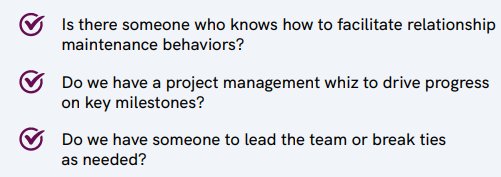
A great way to kick out a new project team is to start with a strengths assessment.
Even an informal discussion to identify key team member strengths can go a long way to minimizing frustration and ambiguity.
Even an informal discussion to identify key team member strengths can go a long way to minimizing frustration and ambiguity.

Know what kind of meeting you’re in.
Do you find yourself stuck in 2-hour meetings that don’t go anywhere? Ones with:

Constant interruptions

Long-winded tangents

People talking past each other

“We’re at time, so let’s think about it more and come back together next week…“
During any given meeting, it’s fair to assume that at least 1 person will forget what kind of meeting they’re in.
This is inevitable. This is human. This is OK.
We are people not robots!
BUT knowing this is inevitable, you can empower your team by clarifying what to expect during different kinds of meetings.
There are three primary meeting types, each requiring different outcomes and behaviors!
Brainstorming Meetings
are successful when a lot of ideas are generated
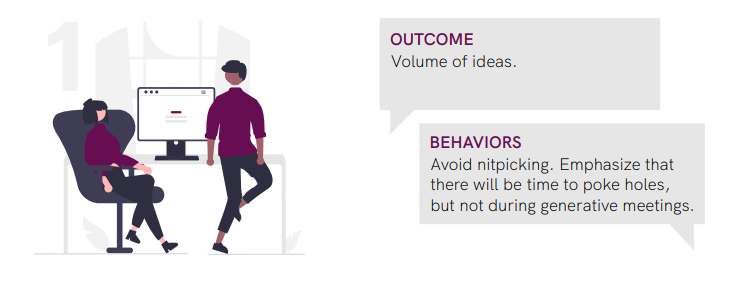
Update Meetings
are for informing and aligning
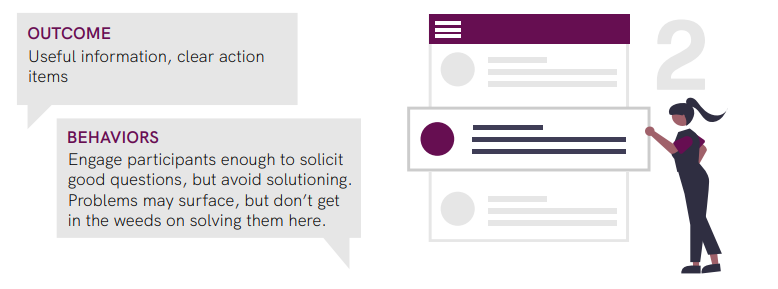
Decision Making
combine elements of update and brainstoming meeting
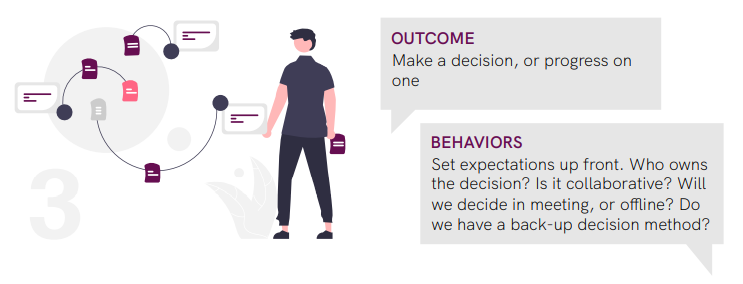
Never underestimate the power of a fresh perspective.
Our clients are at the top of their game in their respective industries.
They’re seasoned leaders, brilliant scientists, and remarkable creators.
If this sounds like you, you might be internalizing self doubt as your own team becomes ensnared in innumerable conflicts and frustrating stalemates.
This is what I do! Shouldn’t I be able to solve this?
Leaders, brilliant and accomplished though you are, you are FULL PEOPLE.
You are complex individuals like anyone else, vulnerable to all the same biases, behaviors, and emotions as the rest of humanity.
That’s why an outside observer is sometimes the only way to make progress with a stuck team.
An outsider can help validate hypotheses, or provide fresh insights about blind spots and group dynamics.
Importantly, an outsider has a better chance to land unbiased feedback than team members in the trenches.
If you don’t have access to a team coach, you can also ask a peer from another team to observe one of your meetings and provide feedback.
They might say no, but most people
a) Want to be helpful
b) Enjoy being a fly on the wall
c) Like to give their two cents
Your colleague may not be able to advise on specific interventions, but soliciting neutral third-party feedback can unblock your team just enough so that you can at least clear your next milestone.
SHARE THIS TOOL WITH A FELLOW LEADER
 Ready to Talk Now?
Ready to Talk Now?